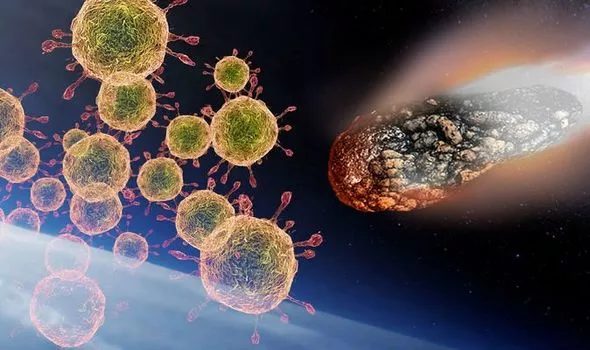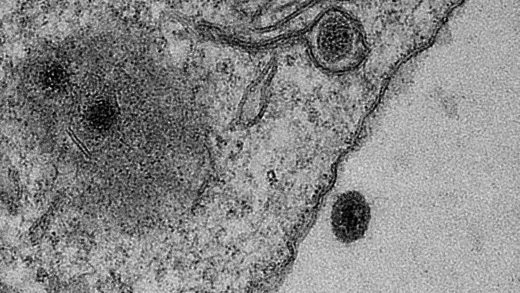Scientists have long held that viruses, bacteria and strands of DNA exists in space carried on comets and meteorites.
They can drift into the Earth's stratosphere before falling to the surface of the planet posing a risk to human health, they say.
The emergence of the novel coronavirus is thought to be the result of a specific meteorite hit recorded in China last autumn.
Professor Chandra Wickramasinghe, of the Buckingham Centre for Astrobiology, said:
"The sudden outbreak of a new coronavirus is very likely to have a space connection, the strong localisation of the virus within China is the most remarkable aspect of the disease. In October last year a fragment of a comet exploded in a brief flash in North East China. We think it probable that this contained embedded within it a monoculture of infective 2019-nCoV virus particles that survived in the interior of the incandescent meteor. We consider the seemingly outrageous possibility that hundreds of trillions of infective viral particles were then released embedded in the form of fine carbonaceous dust. We believe infectious agents are prevalent in space, carried on comets, and can fall towards Earth through the troposphere. These, we think, can and have in the past gone on to bring about human disease epidemics."
Comment: Wickramasinghe may be referring to this meteor fireball that lit up the sky in China on 11th October 2019.
Professor Wickramasinghe believes panspermia is a common route of viral and bacterial emergence on Earth.
While whole organisms can arrive, another route is via strands of DNA - the building blocks of life - which supercharge bugs already here.
The particles drift to the planet in a similar way before being taken up by often harmless germs turning them into killing machines.
Comment: Specifically, through genetic recombination, which takes place in nature far more often - and far more successfully - than it does in bio-labs.
Professor Wickramasinghe said:
"We believe this could have happened with the novel coronavirus. While it is likely it arrived as a new infective agent, there could be an element of mutation triggered by DNA arriving in a similar manner. We have evidence that even in the human genome, 40 per cent of our DNA is viral, and it has been incorporated during our evolution. There is growing evidence that says this DNA comes from space and it is carried into our atmosphere on micro-meteorites before dissipating. It is then taken up by bacteria and viruses. That new insert could have come from space. This disturbing outbreak is due to this, there is no doubt meteorites carry living structures."The unusually virulent nature of the coronavirus could trigger a global pandemic, he warned.
He said:
"The pattern of further global spread of the new coronavirus is likely to follow a high level of person-to-person infectivity, the virus will then acquire endemic status."






Why all the links to wuhan? The questions SOTT has taught us about the impossible speeds of the Black Plague would likewise indicate that with this: " they can drift into the Earth's stratosphere before falling to the surface of the planet posing a risk to human health ", it would not be so directly geographically linked to one place as this has been.
RC